Copernicus’ theory that the Earth went around the Sun, rather than the other way around, was one of the great landmarks of the western scientific revolution. The idea has since been christened ‘heliocentrism’, ie: the idea that the Sun is at the centre of the solar system, rather than the Earth.
Galileo famously became a champion of this idea in the early 17th Century, coming into direct conflict with the Roman Catholic Church. They claimed that Christian doctrine held the Earth as the centre of the solar system — then the entire known universe — and that any challenge to this idea was a challenge to God Himself.
Eventually Galileo had to back down from his claims when faced with the might of the Church, and died in house arrest. But the issue has left a bitter taste in the mouths of scientists ever since.
In this article, we’re going to examine what the Bible really says, see what the Quran claims, and explore the famous ‘Miracle of Joshua’.

Does the Bible Teach Geocentrism?
Central to the Galileo affair was the Church’s claim that geocentrism was formally a part of Orthodox Christian doctrine, and that an attack on this was an attack on the Church. Historian of religion David C. Lindberg, reports:
“[R]evelation literally interpreted, said the leading theologians, clearly taught its fixity. Half a dozen passages from the Bible were appealed to by the theologians. Two of them speak to the issue with particular clarity:
Ecclesiastes 1:5: The Sun rises and the Sun goes down, and hastens to the place where it rises.Psalm 93:1: . . . the world [i.e., the Earth] is established; it shall never be moved.
These are manifestly expressions of geocentric cosmology. A third passage also yields easily to a geocentric interpretation:
Joshua 10:12-13: Then spoke Joshua to the Lord in the day when the Lord gave the Amorites over to the men of Israel; and he said in the sight of Israel, “Sun, stand thou still at Gibeon, and thou Moon in the valley of Aijalon.” And the Sun stood still, and the Moon stayed, until the nation took vengeance on their enemies.
Note that Joshua commanded the Sun to stop, in violation of what was obviously its natural state of motion. Were the cosmos heliocentric, Joshua would have been obliged to command the Earth to cease rotation on its axis.”
Was the Church Right About the Bible?
The geocentrism of the Church at this time was strongly influenced by its alignment to Aristotelian physics and Ptolemaic cosmology, which together gave philosophical and scientific support for a geocentric ideology. Since the Church had spent so many centuries marrying Christian doctrine with these philosophical worldviews, contemplating a divorce was unthinkable.
This perhaps explains why the scriptural basis of geocentrism, quoted above, isn’t particularly convincing.
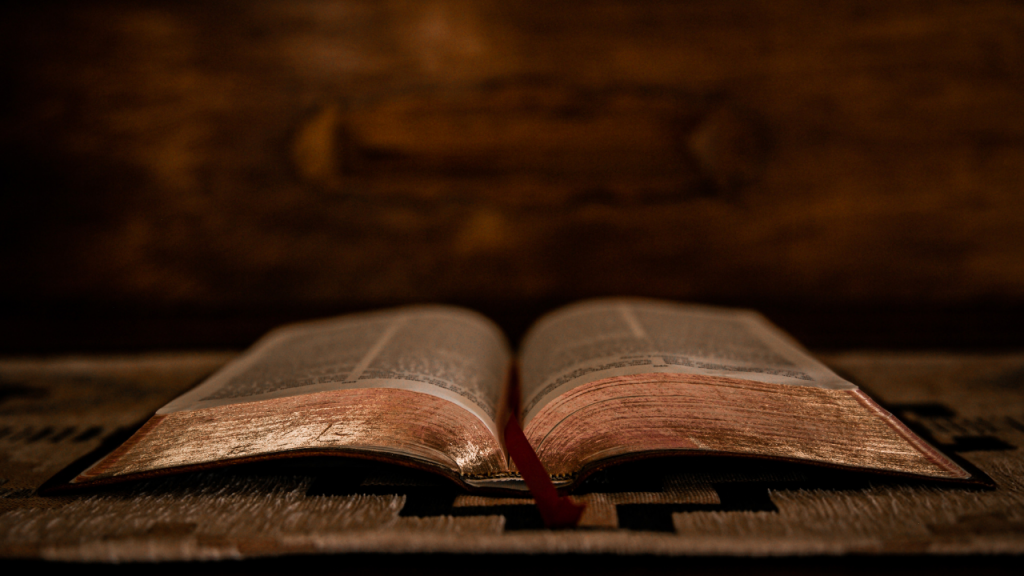
Ecclesiastes Verse
The Ecclesiastes verse about the Sun rising, setting, and hastening to the place of its rising can easily be interpreted in a figurative way. Even today, we talk about Sunset and Sunrise. We don’t say ‘Earth’s Darkening Rotation is at 7.30 today’. This verse also seems to have a more spiritual element, with the ‘hastening’ of the Sun perhaps indicating how everything in the universe shows perfect obedience to God in its service of humanity. Either way, it hardly seems worth going to war about with scientists.
Psalm 93 verse
The Psalm 93 verse talks of the world being ‘established; it shall never be moved.’ While this may seem to be convincing evidence of geocentricity, the Psalms are famously metaphorical and figurative. The preceding verse talks about God being ‘robed’ in majesty. The succeeding voices say the ‘seas have lifted up their voice’, and that God’s statutes are held firm. Clearly the author is using symbolic language. The Earth being firm and established may mean that God’s spiritual purpose on Earth is fixed and resistant to change, or it may refer to the spiritual kingdom of God on Earth. The idea that the author of Psalms is making a cosmological point seems ambitious.
Other Verses
Scripture Catholic gives a whole series of other verses potentially discussing geocentrism. Many are variants of the Psalm verse above. Others discuss the ‘foundations’ of Earth being established. This apparently is evidence for geocentrism. Presumably the thinking is that we should understand the foundations of Earth as being like the foundation of a building, and we should therefore assume the Bible is discussing a flat Earth and geocentricity. However, the foundations of Earth may again be discussing a spiritual kingdom on Earth. If discussing geological realities, then even the Earth has foundations in its material basis, its core and mantle, and the tectonic plates.
Other verses talk about the Sun and the stars in what seem like spiritual terminology. Or they discuss the Sun rising and setting as we do today — movements that are true from our perspective.
The Bible can be criticised for many things, including many of its errors already discussed in this series. However, these criticisms of the Bible are particularly weak. The Catholic Church of course did itself no favour in the Galileo saga, and perhaps brought scripture into unnecessary disrepute in this area.

Did Joshua Really Hold Back the Sun?
The story of Joshua quoted above is very curious. Joshua apparently stops the Sun and the Moon and then defeats his enemies who betrayed a mutual peace treaty. Joshua’s story is also mentioned by recorded traditions of the Prophet Muhammad, peace be upon him. He reportedly said:
“One of the earlier Prophets who was out on an expedition proclaimed among his people that no man should follow him who had married a woman with whom he wished to cohabit but had not yet done so, or who had built houses on which he had not yet put the roofs, or who had bought sheep or pregnant she-camels and was expecting them to produce young.
He, then, went on the expedition and approached the town at the time of the ‘Asr prayer or little before it. He then told the Sun that both it and he were under command and prayed Allah to hold it back for them, so it was held back till Allah gave him victory.”
Sahih Muslim, 1747
The Prophet then gives a variant of the story in Joshua 10 — one which seems more humane.
If we accept this as a further source, then it appears that the Sun was ‘held back’ for Joshua around the late afternoon — the time of the afternoon prayer. Jewish and Islamic commentators have said that Joshua’s motivation for wanting to enter the township before Sunset was that the Sabbath would begin that evening, halting their expedition.
This story of the Bible is relevant to the geocentrism debate because to stop the Sun from setting, you’d have to tell the Earth to stop rotating, not the Sun to stop moving. Not only this, but there is a real question as to the plausibility of the day being elongated for Joshua, whatever the mechanism.
However, a recent study shed light on what the Biblical and Islamic sources may be talking about. Colin J. Humphreys and W. Grame Waddington, two highly established and well-published scientists, published a journal article in Astronomy & Geophysics (2017) that gave good evidence for this event being a partial solar eclipse. They explained that in 1207 BC there was a partial (‘annular’) solar eclipse that would have been visible from Canaan. It is highly plausible that this is the exact period when Joshua would have been in this region fighting this war.
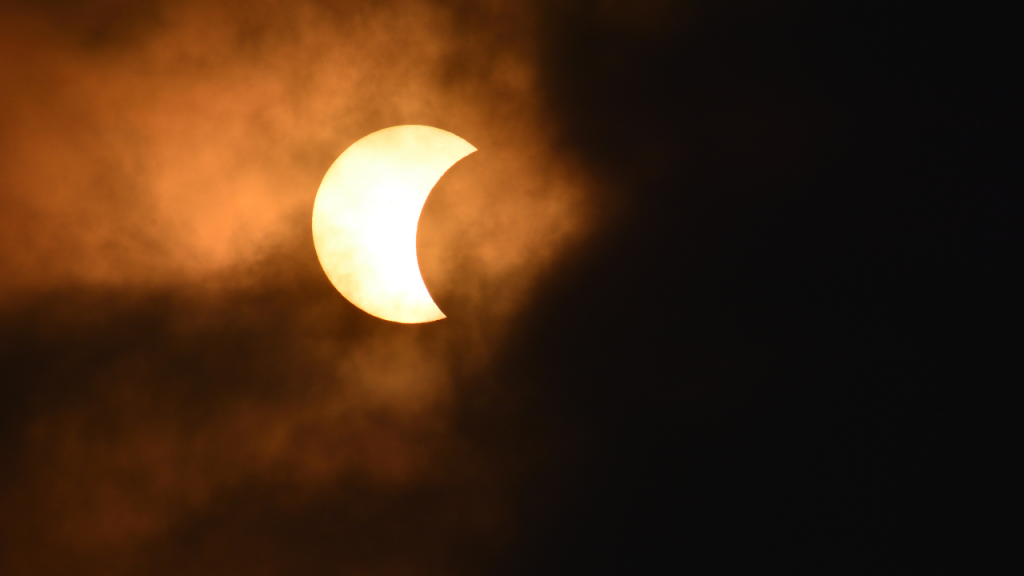
According to Humphreys and Waddington, the partial solar eclipse would have occurred in the late afternoon. This would have meant the light began to diminish. Especially with cloud cover, would have looked to all onlookers like the Sun was setting. However, as the eclipse lifted, it would appear that the Sunset was reversed, or halted. The Sun would remain out for another half an hour or so, before the Sun actually set.
They comment:
“All ancient civilizations would have been accustomed to the Sun going down in the afternoon, leading to daylight turning into dusk, and then turning into night. However, on this occasion, in the afternoon the light from the Sun on Canaan started decreasing from its normal level at about 15:30 until at about 16:50 it was approximately ten times less intense than normal and dusk set in (notice that figure 3 is plotted on a logarithmic scale to match the approximate response of the human visual system). However, by around 17:10 the level of illumination would have been somewhat restored before dusk fell again and then the Sun finally set at about 17:38. In pre-scientific cultures such an unexpected deviation from normal behaviour on the part of the Sun could only inspire awe and the perceived change in the ambient light level would naturally lend itself to description in terms of the normal order of things – namely, dusk. What the Israelites would have witnessed was a double dusk.”
They graphically represented the appearance of the Sun thus:
This corresponds very well to the Islamic account in particular. It specifies that the Sun was ‘held back’ in the afternoon, when the ‘Asr’ prayer was due. What would have happened was that the eclipse caused Joshua and his people to think that the Sun was setting. It was at this time that God inspired Joshua to make his remarkable prayer. The eclipse passed, and it appeared to all onlookers that the Sunset had been halted, or reversed.
This would have been a miracle of epic proportions. In line with Islamic theology as per the Ahmadiyya interpretation, such occurrences are miracles, as they entail God employing natural phenomena at a time of a Prophet’s need, to inspire faith and aid their cause. It does not, however, entail the ‘break’ of a natural law.
Geocentrism vs. Heliocentrism in the Quran
We now turn to the question of whether geocentrism or heliocentrism is better supported by the Quran. The descriptions of the Sun and the Moon are worth visiting first.
The Sun’s Lamp vs. the Moon’s Light
The Quran draws a distinction between the light of the Sun and the light of the Moon:
Holy Quran 10:6, Zafrullah Khan Translation
ہُوَ الَّذِیۡ جَعَلَ الشَّمۡسَ ضِیَآءً وَّالۡقَمَرَ نُوۡرًا وَّقَدَّرَہٗ مَنَازِلَ لِتَعۡلَمُوۡا عَدَدَ السِّنِیۡنَ وَالۡحِسَابَ ؕ مَا خَلَقَ اللّٰہُ ذٰلِکَ اِلَّا بِالۡحَقِّ ۚ یُفَصِّلُ الۡاٰیٰتِ لِقَوۡمٍ یَّعۡلَمُوۡنَ
“He it is Who has made the Sun a source of light and the Moon shedding lustre, and ordained for it stages, that you might learn the method of calculating the years and determining time. Allah has created this system in accordance with truth and wisdom. He expounds the Signs in detail for a people who have knowledge.”
The Quran uses the word ضِیَآءً ‘diyaaun’ to describe the Sun, while using a different word نُوۡرً ‘nuran’ to describe the Moon’s light. The root meaning of the former has more of a connotation of emission — even being used for the glistening light of urine! Lane records that some believe ‘diyaaun’ has more of an intense and active connotation than nur, which is used as a more of a general term for light. The same distinction is held elsewhere:
تَبٰرَکَ الَّذِیۡ جَعَلَ فِی السَّمَآءِ بُرُوۡجًا وَّجَعَلَ فِیۡہَا سِرٰجًا وَّقَمَرًا مُّنِیۡرًا
“Blessed is He Who has made mansions in the heavens and has placed therein an illuminating lamp and a bright Moon.”
Holy Quran 25:62, Zafrullah Khan translation
In this verse too, the Sun is called a سِرٰجًا ‘siraajan’ — a lamp — while the Moon is called مُّنِیۡرًا munir, a variant of the root of the word nuran above. The root of the former (سرج s-r-j) has the connotation of a lamp, (ie. one with wick and oil), while munir is more of a general, guiding light. The distinction is intensified in verse 78:14 where the Sun is called a brightly burning lamp. While a critic may see this as simply corresponding to their respective radiances, a believer can propose a distinction based in reality — the Sun emits light while the Moon merely reflects it.
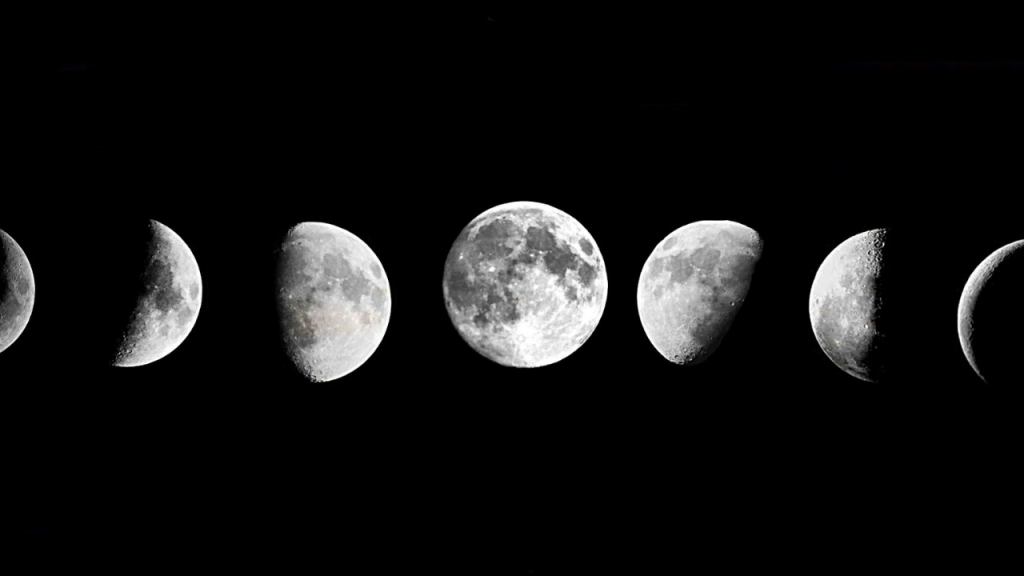
Indeed, it is not a given that such distinctions are maintained in old religious scriptures. For instance, the Bible tells us:
“And God maketh the two great luminaries, the great luminary for the rule of the day, and the small luminary — and the stars — for the rule of the night…”
Genesis 1:16 — Young’s Living Translation
This verse has presented Christians with a problem, because the same word (הַמָּא֤וֹר, ham-mā-’ō-wr) is used to describe both the Sun and the Moon. Moreover, the word has the connotation of something which emits light, or is a light source. While a devotee can say that it is simply talking from a human perspective, from where both the Sun and Moon send light, the Quran insists on making the (accurate) distinction.
All of Them Float in an Orbit
Next there is a rather significant passage in Chapter 36:
سُبۡحٰنَ الَّذِیۡ خَلَقَ الۡاَزۡوَاجَ کُلَّہَا مِمَّا تُنۡۢبِتُ الۡاَرۡضُ وَمِنۡ اَنۡفُسِہِمۡ وَمِمَّا لَا یَعۡلَمُوۡنَ
وَاٰیَۃٌ لَّہُمُ الَّیۡلُ ۚۖ نَسۡلَخُ مِنۡہُ النَّہَارَ فَاِذَا ہُمۡ مُّظۡلِمُوۡنَ
Holy Quran, 36:37-41
وَالشَّمۡسُ تَجۡرِیۡ لِمُسۡتَقَرٍّ لَّہَا ؕ ذٰلِکَ تَقۡدِیۡرُ الۡعَزِیۡزِ الۡعَلِیۡمِ
وَالۡقَمَرَ قَدَّرۡنٰہُ مَنَازِلَ حَتّٰی عَادَ کَالۡعُرۡجُوۡنِ الۡقَدِیۡمِ
لَا الشَّمۡسُ یَنۡۢبَغِیۡ لَہَاۤ اَنۡ تُدۡرِکَ الۡقَمَرَ وَلَا الَّیۡلُ سَابِقُ النَّہَارِ ؕ وَکُلٌّ فِیۡ فَلَکٍ یَّسۡبَحُوۡنَ
“Holy is He Who created all things in pairs, of what the Earth grows, and of themselves, and of what they know not. And a Sign for them is the night from which We strip off the day, and lo! they are in darkness. And the Sun is moving on the course prescribed for it. That is the decree of the Almighty, the All-Knowing God. And for the Moon We have appointed stages, till it becomes again like an old dry branch of a palm-tree. It is not for the Sun to overtake the Moon, nor can the night outstrip the day. All of them float in an orbit.”
In this passage, the Quran describes as a sign for mankind the alternation of day and night. This sign is employed frequently in the Quran because its primary significance rests in its metaphorical meaning — that of civilisations and religious movements rising and falling. With the dawn of a new Sun, a new era is born, which inevitably sets, leaving a diminished light in a night of darkness. This is no post-hoc interpretation — the Quran itself in 33:47 labels the Prophet Muhammad, peace be upon him, as an illuminating lamp (وَسِرَاجًا مُّنِیۡرً sirrajam-munira), combining the terms used for both the Sun and the Moon earlier.
Despite this, the sign here also applies to the physical realm. We may consider the alternation of night and day a fairly humdrum and inconsequential affair. In fact, it is totally essential for the emergence of life and deeply informs our biology, including our circadian rhythms. The configuration of the Sun, Moon and Earth determine it. For instance, in order to have alternate days and nights, the Earth has to rotate. However, in order to support the emergence of life, the Earth cannot rotate too fast, and its rotation is fortunately slowed by the presence of the Moon at its present size.
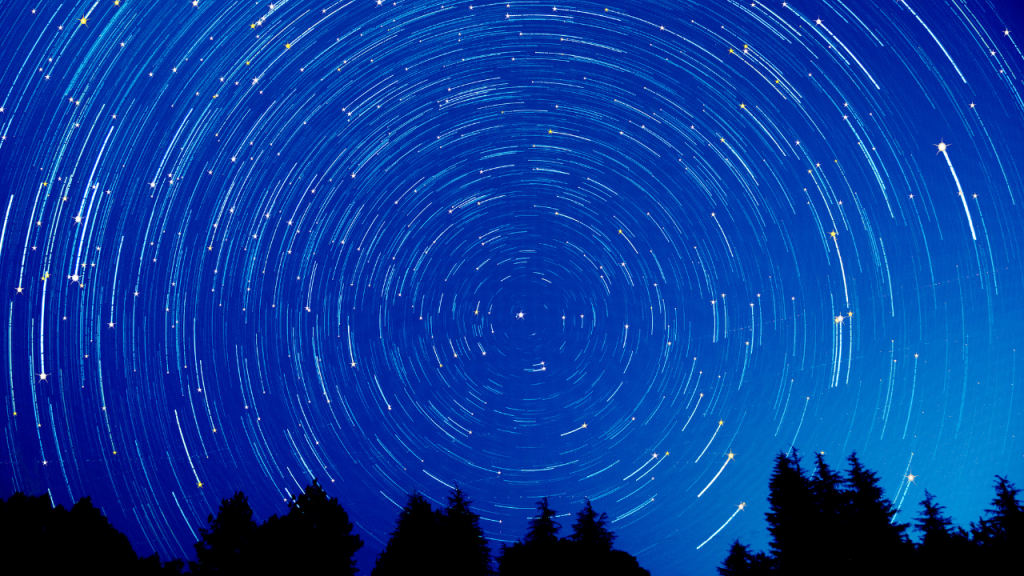
Not only this, but as Hugh Ross, author of the excellent ‘Improbable Planet’ (2016) explains, the Earth exists in the ‘tidal habitable zone’ where the Earth is far enough to rotate, but not far enough to be too cold.
“If a planet orbits too close to its star, it becomes tidally locked (as the Moon is tidally locked with Earth), which means one hemisphere faces permanently toward its star. As a result of tidal locking, one face of the planet would receive an unrelenting flow of stellar radiation while the opposite side would receive none. On a tidally locked planet, then, the only conceivable place where life could exist would be in the twilight zone—that narrow region between permanent light and permanent darkness. If such a planet happened to reside in the liquid water habitable zone and possess an atmosphere, water would move via atmospheric transport from the day side to the night side, where it would become permanently trapped as ice. So, no liquid water would exist anywhere on its surface. For life to exist on a tidally locked planet, it would have to be unicellular, exhibit extremely low metabolic rates, and reside below the surface…
Chapter 7, Improbable Planet, Hugh Ross, 2016
The Sun’s mass proves just right for life on other counts, beyond applying tidal forces to ensure Earth’s just-right rotation rate at the just-right time for the benefit of human life. The complex interaction of both solar and lunar tidal effects permits Earth to sustain an enormous biomass and biodiversity at its seashores and on its continental shelves. The tides on Earth are optimal for recycling nutrients and wastes. They provide the potential for a rich and abundant ecology.”
The verse goes on to say that ‘the Sun is moving on the course prescribed for it.’ While this may superficially seem like an endorsement of geocentrism, where the Sun moves while the Earth remains still, this would be a mistake. Firstly, the Sun does move through our course of vision in the human sphere, so from our perspective, this is correct.
However, if we are to take a more universal perspective, the Sun is hurtling through the Milky Way galaxy. In fact, at a speed of 828,000 km/hr, it takes the Sun 230 million years to make one orbit of the Milky Way, termed a ‘galactic year’ (NASA). Thus, this phrase, while making perfect sense under geocentrism, also makes perfect sense under contemporary heliocentrism. The Quran tells us it will ultimately have a set destination, perhaps in Saggitarus A*, the supermassive black hole at the centre of our galaxy.
The passage goes on to describe how the Moon goes through various phases of illumination. This, again, does not directly implicate either geocentrism or heliocentrism.
It continues to say that ‘the Sun cannot overtake the Moon, not the night outstrip the day.’ How could one overtake the other? Clearly the answer would be if the Sun and Moon did not appear in the same alternating, regular and predictable pattern. The length of days increases in the summer and reduces in the winter. Despite this, the Moon appears at night throughout the year in a regular lunar pattern. Under geocentrism, the Moon and Sun would be in separate orbits around the Earth, making it difficult to conceive of how this pattern is kept up without an enormous amount of tinkering in the intra-orbital speeds of the Sun and the Moon throughout the year.
Unfortunately, Ptolemaic theory, the mainstay of geocentrism over millennia, was ridden with inelegant and arbitrary tinkerings such as these. While the Muslims did get rid of so many of these arbitrary constraints, paving the way to Copernicus’ heliocentrism, it seems this hint was not taken. Regardless, this phrase does not constitute a direct refutation of geocentrism or an explicit endorsement of heliocentrism.

The final phrase says that ‘all of them float in an orbit.’ The word used for float is فَلَکٍ (falakin), which has the connotation of swimming or gliding, as well as a rounded, circular motion. This indicates that a non-solid medium is being discussed, as you cannot swim or float through solidity. As such, the Quran gives a surprising description, since the Ptolemaic model that reigned until Copernicus held that the heavens were made of solid spheres. It took Kepler to recognise that there must be empty ‘space’ in space! The Quran refuted the Ptolemaic/Aristotelian idea that the heavens are made of solid spheres by saying that the heavens have celestial bodies floating or gliding in them, rather than as embedded bodies on rotating spheres.
Perhaps even more significant than this is the translated phrase ‘all of them’ in ‘all of them float in an orbit.’ The preceding sentence discusses the Sun, the Moon, the night and the day. However, the arabic for float is in the full plural یَّسۡبَحُوۡنَ (yasbahuun), which requires three or more subjects. If only the Sun and Moon were connoted, then the dual would have been used. So what is the minimum requirement of the third body being discussed? It can’t really be the day and night, as these are states, and not things which float or swim. However, the states of day and night cover the Earth, and the Earth is the only other celestial body mentioned in the passage. Thus the context suggests that the Earth is the other celestial body that floats. But if the Sun, Moon and Earth all float in an orbit, how can geocentrism be true? It can’t be. Only heliocentrism would work with this description, with the modern caveat regarding the Sun’s orbit around the milky way. This constitutes a subtle critique of the geocentric theory, one which muslims of old potentially missed, or at least couldn’t translate into their astronomical theories.
If we are to give the phrase a more esoteric look, the Quran advocates in this passage for a kind of ‘celestial relativism’, where everything in the universe has a complement (a pair), and all celestial bodies are in some kind of orbital motion. In such a reading, only God is fixed, and independent — As-Samad.

The Rotation of the Earth
Relevant to our discussion on geocentrism is the rather shocking proclamation of Chapter 27:
وَتَرَی الۡجِبَالَ تَحۡسَبُہَا جَامِدَۃً وَّہِیَ تَمُرُّ مَرَّ السَّحَابِ ؕ صُنۡعَ اللّٰہِ الَّذِیۡۤ اَتۡقَنَ کُلَّ شَیۡءٍ ؕ اِنَّہٗ خَبِیۡرٌۢ بِمَا تَفۡعَلُوۡنَ
Holy Quran 27:89
“The mountains that you see, you think they are stationary while they are constantly floating like the floating of clouds. Such is the work of Allah Who made everything firm and strong.”
It tells us that visible mountains appear stationary while in reality they float like clouds. There are only two ways in which this can be true: either the entire Earth is rotating, causing the mountains to float in space, or mountain ranges are somehow floating on top of the Earth.
Remarkably, both are true. The Earth is indeed rotating, as we now know. Not only this, but mountain ranges float on top of the Earth’s crust:
“… as a mountain range forms, it slowly sinks under the force of gravity, and the continental crust bends downward. When enough of a root bulges into the mantle to provide buoyancy, the mountain range floats.”
Understanding Earth, Grotzinger & Jordan, pg. 630 (2014)

Previous commentators were unable to understand this verse, vainly trying to impute it to the final resurrection, as Hazrat Mirza Tahir Ahmad, the fourth Caliph of the Ahmadiyya Muslim Community reported.
The Sun and Moon Coming Together
We now turn to some verses which critics allege support geocentrism. One such passage is in Chapter 75 (The Resurrection), where the Sun and Moon are described as coming together:
یَسۡـَٔلُ اَیَّانَ یَوۡمُ الۡقِیٰمَۃِ
Holy Quran 75:7-11
فَاِذَا بَرِقَ الۡبَصَرُ ۙ
وَخَسَفَ الۡقَمَرُ
وَجُمِعَ الشَّمۡسُ وَالۡقَمَرُ
یَقُوۡلُ الۡاِنۡسَانُ یَوۡمَئِذٍ اَیۡنَ الۡمَفَرُّ
“He asks, ‘When will be the Day of Resurrection?’ When the eye is dazzled, And the Moon is eclipsed, And the Sun and the Moon are brought together, On that day man will say, ‘Whither to escape?’”
Amusingly, critics such as Wiki Islam use this passage to disprove the scientific literacy of the Quran. Despite the rather direct mention of a lunar eclipse of the Moon in the verse before, they say that ‘the Sun and Moon coming together’ cannot refer to a solar eclipse, but must refer to a literal collapse of the Sun into the Moon! The implication is that this sits better in a geocentric worldview rather than a heliocentric one.
The premise is of course baseless. There is no reason to assume the Sun and Moon coming together to mean a physical crash, rather than a description of the union of Sun and Moon from the perspective of a human on Earth. This is even more obvious when a lunar eclipse is mentioned in the prior version. Even if a physical crash was meant, which seems an unwarranted interpretation, this would support neither geocentric nor heliocentric theory!
In fact, according to Ahmadiyya Muslim theology, this passage refers to the end-times — the Day of Resurrection — and these signs found fulfilment in the present era with the arrival of Hazrat Mirza Ghulam Ahmadas, the Promised Messiah and Imam Mahdi, in dual solar and lunar eclipses in the month of Ramadan in 1894 and 1895. You can read more about this here and here.
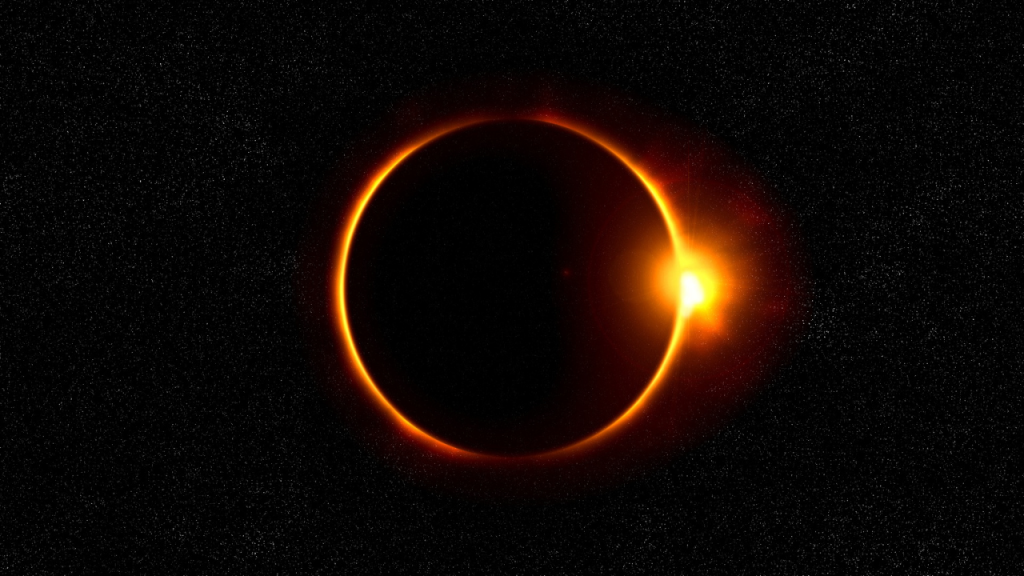
Abraham’s Challenge
The next set of verses that are said to indicate geocentrism is the following:
Holy Quran 2:259
اَلَمۡ تَرَ اِلَی الَّذِیۡ حَآجَّ اِبۡرٰہٖمَ فِیۡ رَبِّہٖۤ اَنۡ اٰتٰٮہُ اللّٰہُ الۡمُلۡکَ ۘ اِذۡ قَالَ اِبۡرٰہٖمُ رَبِّیَ الَّذِیۡ یُحۡیٖ وَیُمِیۡتُ ۙ قَالَ اَنَا اُحۡیٖ وَاُمِیۡتُ ؕ قَالَ اِبۡرٰہٖمُ فَاِنَّ اللّٰہَ یَاۡتِیۡ بِالشَّمۡسِ مِنَ الۡمَشۡرِقِ فَاۡتِ بِہَا مِنَ الۡمَغۡرِبِ فَبُہِتَ الَّذِیۡ کَفَرَ ؕ وَاللّٰہُ لَا یَہۡدِی الۡقَوۡمَ الظّٰلِمِیۡنَ
“Hast thou not heard of him who disputed with Abraham about his Lord, because Allah had given him kingdom? When Abraham said, ‘My Lord is He Who gives life and causes death,’ he said, ‘I also give life and cause death.’ Abraham said, ‘Well, Allah brings the Sun from the East; bring it thou from the West.’ Thereupon the infidel was dumbfounded. And Allah guides not the unjust people.”
The criticism here is that the Sun is described as physically moving, and therefore, the Quran subscribes to geocentrism. This is of course an absurd criticism, because the Sun does appear to be moving. That’s why even in modern life we use the terms ‘Sunrise’ and ‘Sunset’, without people leaping to defend Copernicus’ honour. The description provided is clearly perspectival.
The Sun Sets in a Muddy Spring
The next set of verses apparently applicable to this are the verses regarding Dhul Qarnayn, and the relevant passage describes the Sun rising and then setting in a ‘muddy spring.’ We have already explained this passage in depth here.
In sum, the Quran is plainly giving a parable about the state of the world when it would be divided into religious darkness vs. religious extremism. If taken literally as a historical event, the passage contains surprisingly accurate information about the constitution of the Black Sea in the time of Cyrus.

The Night and Day of the Heaven
ءَاَنۡتُمۡ اَشَدُّ خَلۡقًا اَمِ السَّمَآءُ ؕ بَنٰہَا
رَفَعَ سَمۡکَہَا فَسَوّٰٮہَا
وَاَغۡطَشَ لَیۡلَہَا وَاَخۡرَجَ ضُحٰہَا
وَالۡاَرۡضَ بَعۡدَ ذٰلِکَ دَحٰٮہَا
“Are you harder to create or the heaven that He has built?
He has raised the height thereof and made it perfect.
And He has made its night dark, and has brought forth the morn thereof;
And the Earth, along with it, He spread forth.” 79:28-31
Critics such as Wiki Islam further allege that this set of verses prove the Quran supports geocentrism. The idea is that the Quran says the ‘heaven’ has a night, as well as a morning. This is taken to mean that the entire universe has a day and a night, which apparently fits better with a geocentric model.
The problem with this criticism is that on its own grounds, it makes little sense. Even under geocentrism, the entire solar system does not have a day and a night. The Sun has its own orbits, and light from the Sun would vary in intensity depending on where the observer is, and their distance from the Sun.
The verse is easily understood when we consider that ‘the heaven’ (singular) does not refer to the entire cosmos. The Quran says the heaven is stratified into seven heavens in 2:30:
Holy Quran 2:30
ہُوَ الَّذِیۡ خَلَقَ لَکُمۡ مَّا فِی الۡاَرۡضِ جَمِیۡعًا ٭ ثُمَّ اسۡتَوٰۤی اِلَی السَّمَآءِ فَسَوّٰٮہُنَّ سَبۡعَ سَمٰوٰتٍ ؕ وَہُوَ بِکُلِّ شَیۡءٍ عَلِیۡمٌ
“He it is Who created for you all that is in the Earth; then He turned towards the heavens, and He perfected them as seven heavens; and He knows all things.”
As will be explained in the Days of Creation article, the lowest heaven/sky (السَّمَآءُ samaa’) includes our atmosphere. In the chapter 79 verse therefore, we can take the ‘sky’ mentioned to mean our Earthly atmosphere. And this surely has a night and day, being the medium by which we perceive the light of the Sun or its absence!
That the night and day actually belongs to the atmosphere, rather than to the Earth, is proved by the phenomenon of ‘atmospheric refraction’. This is when light from celestial objects, primarily the Sun, is refracted by our atmosphere. It means that we can see the Sun before it technically rises above our horizon, because the light bends up towards us. This also means we can see the Sun for a few minutes after it has set.
As discussed elsewhere, the spreading of the Earth may well refer to the production and spread of tectonic plates.

Other Verses & Hadith
There are many other relevant verses which discuss the Sun and the Moon, and the night and the day. Most repeat the kinds of phrases already discussed, though in different contexts.
One (39:6) discusses how the night ‘envelops’ the day, and the day ‘envelops’ the night. While some Muslims hold that this indicates heliocentricity, because the words have the connotation of rotating, it is not clear that it is specific enough to support an exclusively heliocentric reading.
Another set of verses (91:4) describe the day as revealing, and the night as concealing, said by some to be a reference to the Earth facing and turning away from the Sun. Thus what is being revealed or covered would be the light of the Sun. While this is a plausible interpretation, the verse would still be understandable under geocentrism, where night and day depend on the Sun’s orientation to a particular area of the Earth. The verse therefore seems neutral to both heliocentrism and geocentrism; an exclusive heliocentric interpretation seems forced.
There are also some hadith (oral traditions) cited in reference to this subject. These are inherently less fruitful to discuss. Muslims do not have to defend any particular hadith, as they are not under any divine guarantee of reliability, many being collected after a century since the Prophet was said to utter them, peace be upon him. Moreover, these kinds of scientific topics are often sensitive to the exact language used, again making oral traditions more difficult to discuss.
Despite this, some comment is useful. One hadith that apparently supports geocentrism reads:
حَدَّثَنَا يَحْيَى بْنُ أَيُّوبَ، وَإِسْحَاقُ بْنُ إِبْرَاهِيمَ، جَمِيعًا عَنِ ابْنِ عُلَيَّةَ، – قَالَ ابْنُ أَيُّوبَ حَدَّثَنَا ابْنُ عُلَيَّةَ، – حَدَّثَنَا يُونُسُ، عَنْ إِبْرَاهِيمَ بْنِ يَزِيدَ التَّيْمِيِّ، – سَمِعَهُ فِيمَا، أَعْلَمُ – عَنْ أَبِيهِ، عَنْ أَبِي ذَرٍّ، أَنَّ النَّبِيَّ صلى الله عليه وسلم قَالَ يَوْمًا ” أَتَدْرُونَ أَيْنَ تَذْهَبُ هَذِهِ الشَّمْسُ ” . قَالُوا اللَّهُ وَرَسُولُهُ أَعْلَمُ . قَالَ ” إِنَّ هَذِهِ تَجْرِي حَتَّى تَنْتَهِيَ إِلَى مُسْتَقَرِّهَا تَحْتَ الْعَرْشِ فَتَخِرُّ سَاجِدَةً وَلاَ تَزَالُ كَذَلِكَ حَتَّى يُقَالَ لَهَا ارْتَفِعِي ارْجِعِي مِنْ حَيْثُ جِئْتِ فَتَرْجِعُ فَتُصْبِحُ طَالِعَةً مِنْ مَطْلِعِهَا ثُمَّ تَجْرِي حَتَّى تَنْتَهِيَ إِلَى مُسْتَقَرِّهَا تَحْتَ الْعَرْشِ فَتَخِرُّ سَاجِدَةً وَلاَ تَزَالُ كَذَلِكَ حَتَّى يُقَالَ لَهَا ارْتَفِعِي ارْجِعِي مِنْ حَيْثُ جِئْتِ فَتَرْجِعُ فَتُصْبِحُ طَالِعَةً مِنْ مَطْلِعِهَا ثُمَّ تَجْرِي لاَ يَسْتَنْكِرُ النَّاسُ مِنْهَا شَيْئًا حَتَّى تَنْتَهِيَ إِلَى مُسْتَقَرِّهَا ذَاكَ تَحْتَ الْعَرْشِ فَيُقَالُ لَهَا ارْتَفِعِي أَصْبِحِي طَالِعَةً مِنْ مَغْرِبِكِ فَتُصْبِحُ طَالِعَةً مِنْ مَغْرِبِهَا ” . فَقَالَ رَسُولُ اللَّهِ صلى الله عليه وسلم ” أَتَدْرُونَ مَتَى ذَاكُمْ ذَاكَ حِينَ لاَ يَنْفَعُ نَفْسًا إِيمَانُهَا لَمْ تَكُنْ آمَنَتْ مِنْ قَبْلُ أَوْ كَسَبَتْ فِي إِيمَانِهَا خَيْرًا ” .
“It is narrated on the authority of Abu Dharr that the Messenger of Allah (ﷺ) one day said:Do you know where the Sun goes? They replied: Allah and His Apostle know best. He (the Holy Prophet) observed: Verily it (the Sun) glides till it reaches its resting place under the Throne. Then it falls prostrate and remains there until it is asked: Rise up and go to the place whence you came, and it goes back and continues emerging out from its rising place and then glides till it reaches its place of rest under the Throne and falls prostrate and remains in that state until it is asked: Rise up and return to the place whence you came, and it returns and emerges out from it rising place and then it glides (in such a normal way) that the people do not discern anything ( unusual in it) till it reaches its resting place under the Throne. Then it would be said to it: Rise up and emerge out from the place of your setting, and it will rise from the place of its setting. The Messenger of Allah (ﷺ) said. Do you know when it would happen? It would happen at the time when faith will not benefit one who has not previously believed or has derived no good from the faith.”
Sahih Muslim
Critics report that this clearly supports geocentrism. For instance, it describes a resting place for the Sun, and describes the Sun as going there and coming back. Critics take this all literally, and argue that the prophet must be describing a literal geocentric system. Despite being so literal, they decline to describe how the Sun literally prostrates before God. They also do not mention that if they take the narration at face value, the Sun does not rotate around the Earth, but rotates around the throne of God.
Indeed, the narration ends by describing the famous ‘Sun rising from the west’ in the end-times, linking this to the conditions of muslims in the last era of humanity, a subject oft-discussed in Islamic eschatology.
There are different variations of this hadith, with some giving more or less of an explanation. (The hadith just linked not necessarily representing all of the variants). Hazrat Mirza Tahir Ahmad, the fourth Caliph of the Ahmadiyya Muslim Community, believed that the word for ‘throne’, ‘arsh’, reported herein may well have been based on a mishearing or miscommunication of the actual word being said, ‘ard’, meaning Earth — the two sounding very similar. He suggested that the course of the Sun around the Earth being described was based on the perspective of someone on Earth. As it rotates, the Sun indeed appears to go under the Earth. It then rises from the west in the sense that it rises for those on the other side of the Earth from our west, or their east. This then, was a way of explaining the solar system in a way that made sense to the audience of the Prophet Muhammad, peace be upon him.
If critics insist that the apparent wording of the above verse must be defended, then another interpretation is certainly possible. We can recall that the Prophet himself is referred to as an illuminating lamp in the Quran, the same word being used for the Sun. As such, he is considered the ‘Sun of Islam’ for the Muslims, the source of guidance for the believers. With this in mind, the Prophet may have been giving a prophecy about the future of Islam, where the spiritual light of Islam may alternately rise and fall with the appearance and disappearance of Islamic reformers. This accords with the well-known prophecy about the mujaddideen (reformers/revivers) who would come to reform the Muslims after the Prophet passed away. The reference to the Throne of God may refer to God’s seat of power being demonstrated by raising such reformers at the time and place of need for the Muslims.
Combining these with prophecies regarding the Imam Mahdi and Promised Messiah in the latter days, these local reformers would continue to come until the Muslims reached a point of total spiritual stagnation: “when faith will not benefit one who has not previously believed or has derived no good from the faith.” At this point, the Sun would ‘rise from the west’, implied by the ‘place of its setting.’
Under Ahmadiyya Muslim theology, this refers to the rise of Islam in the western world, as we are seeing in the present day, something that only took place in the 20th century onwards.
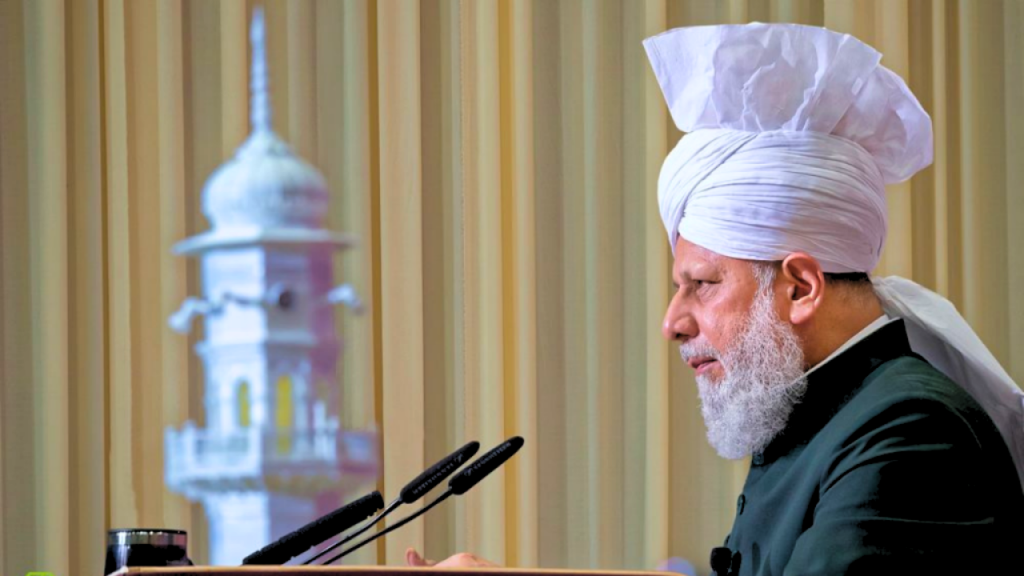
Conclusion
While the Bible has many verses that can be read in a geocentric manner, they seem to be largely observer-dependent, and therefore neutral to both geocentrism and heliocentrism. Many of the verses are clearly discussing spiritual matters and using allegorical language. It seems unfair to say that the Bible commits to geocentrism. Meanwhile, the great miracle of Joshua discussed in both Christian and Muslim sources seems to be a genuine miracle with a scientific explanation, through the appearance of a partial eclipse at the time of Joshua’s need.
The Quran conveys much more specific information about the celestial bodies than the Bible. It makes an accurate distinction between the light of the Sun and Moon, one which the Bible fails to make. It then has numerous verses discussing the day and night. None of them are explicit in suggesting a geocentric or heliocentric cosmological view. Most phrases are neutral to the two perspectives, usually giving an observer-dependent description.
However, unlike the Bible, the Quran does give some descriptions which don’t make sense under traditional geocentric Ptolemaic astronomy, but do make sense under contemporary heliocentrism. For instance, it strongly suggests that the Earth is rotating, by describing mountains on the Earth’s surface as moving like clouds. It also suggests that the Earth, Moon, and Sun are all floating in orbits. The descriptions of the Sun not overtaking the Moon, and vice versa, as well as the Sun alone being an emitting source of light, fit better under heliocentrism rather than geocentrism.
As demonstrated, attempts to impugn the Quran as committing to geocentrism fail.
Given all this, the obvious question that many ask is why the Quran does not make explicit references to heliocentrism? The answer should be fairly obvious — such references would not have made any sense for over a thousand years, putting off an entire millennium’s worth of readers from the Quran, and giving baseless grounds for the attacks of critics. Instead it used language which is subtle enough not to upset a millenium of scientific dogma, but accurate enough to be understood by the wise of past and current eras as referring to heliocentrism.
In response to this argument, many critics object that the Quran had no issue with contradicting much received wisdom, so why should it not do the same on the topic of celestial mechanics? If the Quran explicitly opposed polytheism, why not geocentrism?
The reason is that the matters of faith about which the Quran contradicted prevailing wisdom were primarily spiritual and religious in nature. These teachings, muslims claim, are far more reasonable and natural to the human mind and soul than those they replaced. The scientific matters about which it explicitly contradicted prevailing wisdom, like in its embryological descriptions, were of issues essentially obscure to every mind of that era, allowing believers and disbelievers alike to set such matters aside for future debate.
The same cannot be said for heliocentrism however, which defies common sense and universal observation. It required centuries, millennia even, of concerted work by Greek, Indian, Muslim and European scientists to finally prove that we cannot trust our eyes on this subject. Thus challenging these ideas so explicitly, while the science would take centuries to catch up, would be profoundly unwise for the Quran’s Divine Author.
Moreover, in order to convey exclusively heliocentric ideas, the Quran would be limited to giving very physical descriptions of the night and day. This would have constrained its simultaneous spiritual meanings, which are far more consequential for a reader in whatever age. Descriptions such as the Sun rising and setting, the day turning into the night, etc… are both correct perspectivally, and employed as metaphors for various spiritual and worldly phenomena. The Quran uses such descriptions as foundational metaphors in many passages to represent prophets, their messiahs, and the rise and fall of nations to great effect.
Sacrificing this to please the 21st-century critics of Islam befits not the wisdom of the ‘Light of the Heavens and the Earth.’
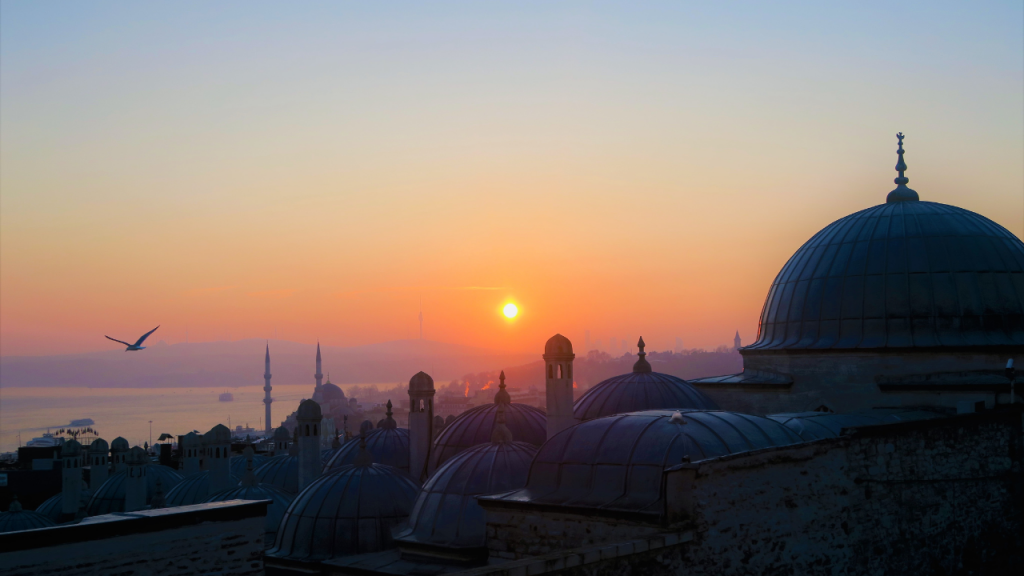
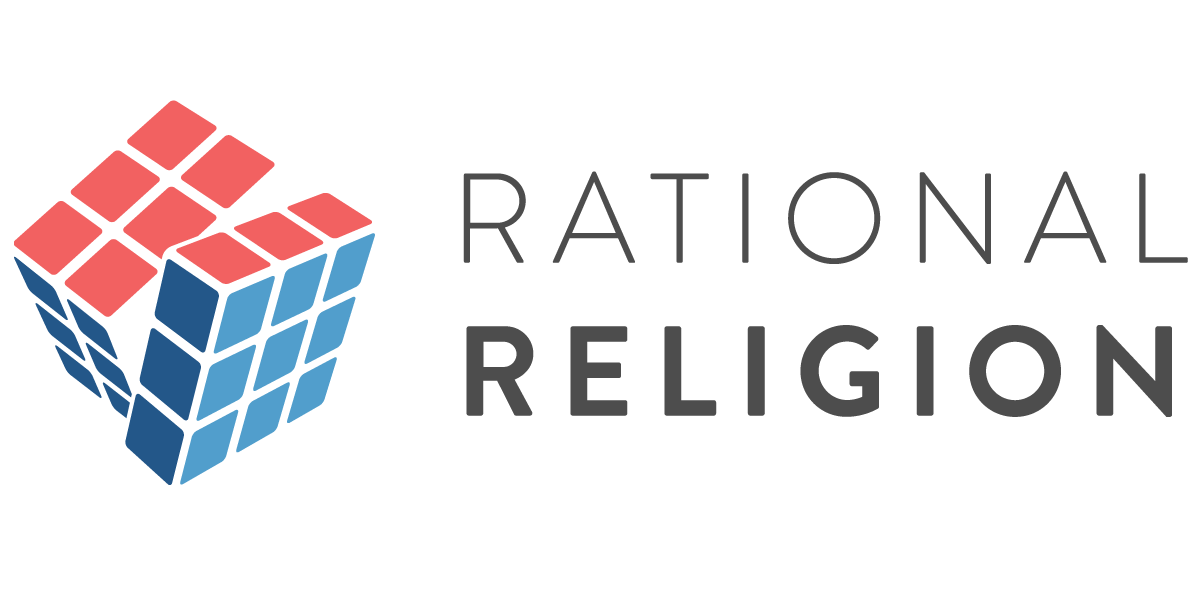
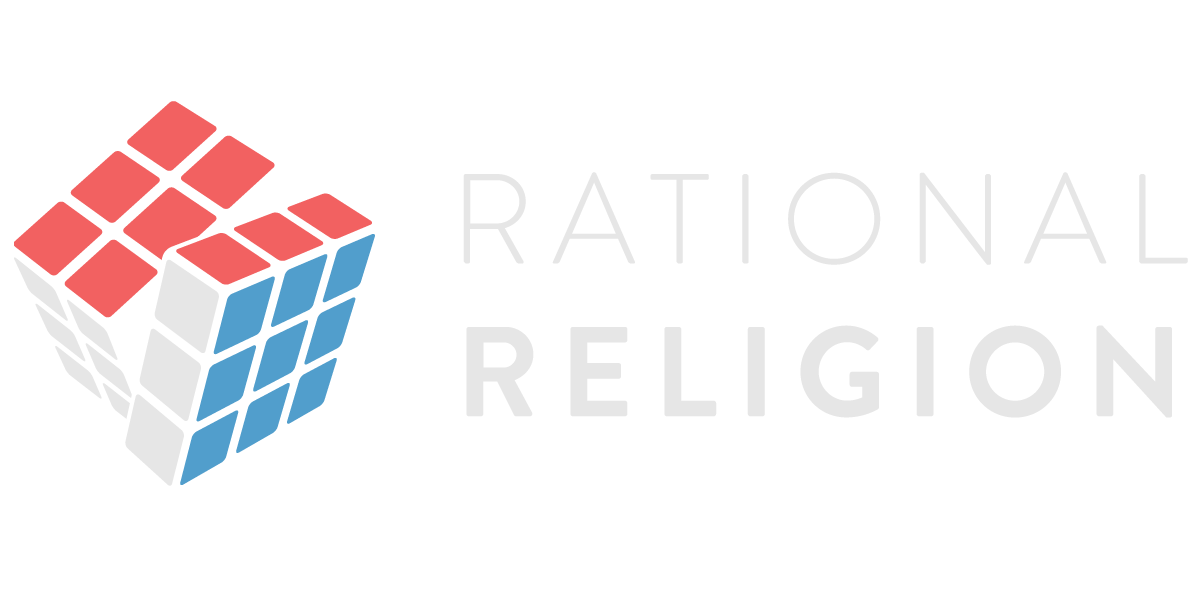
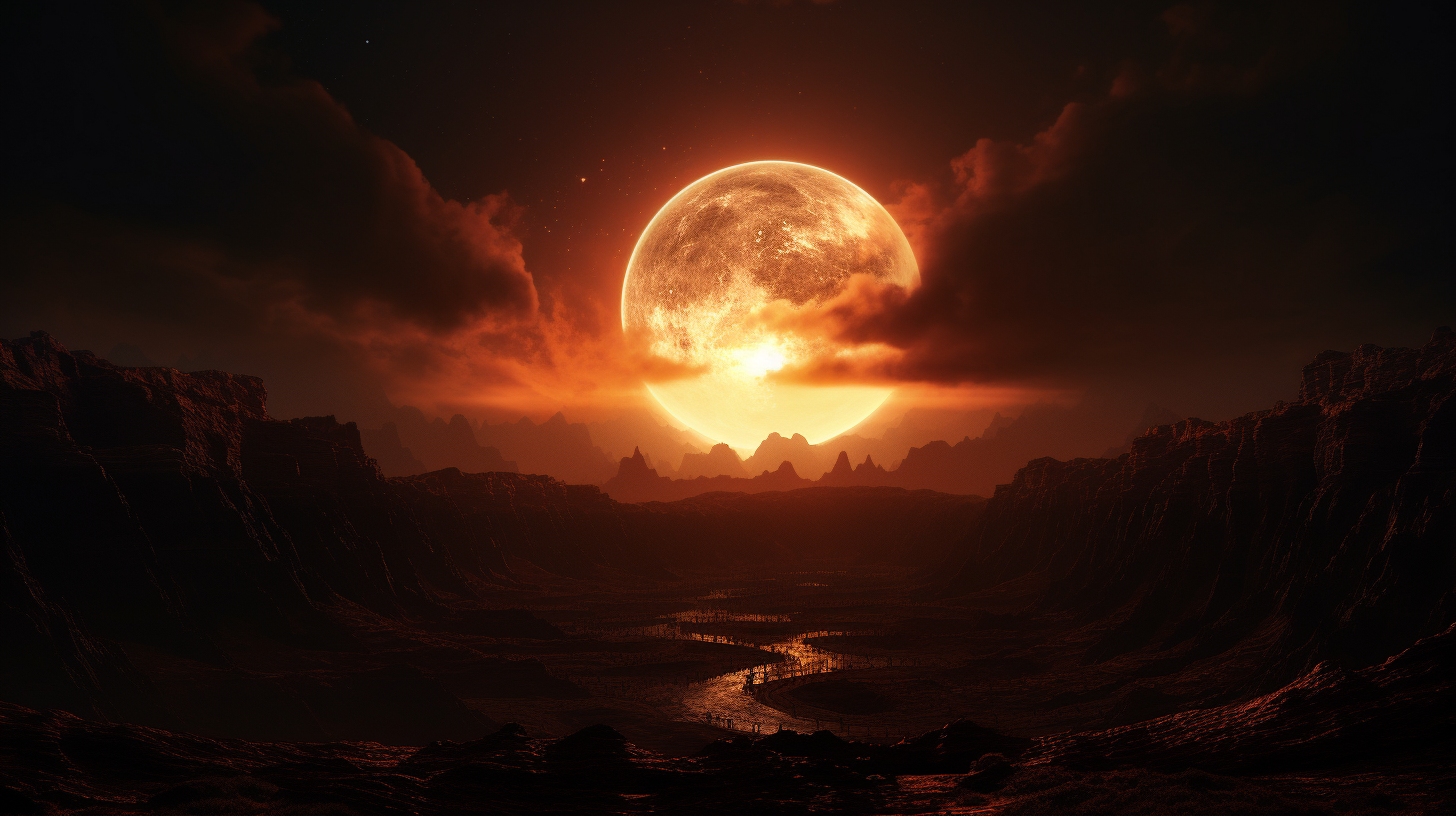



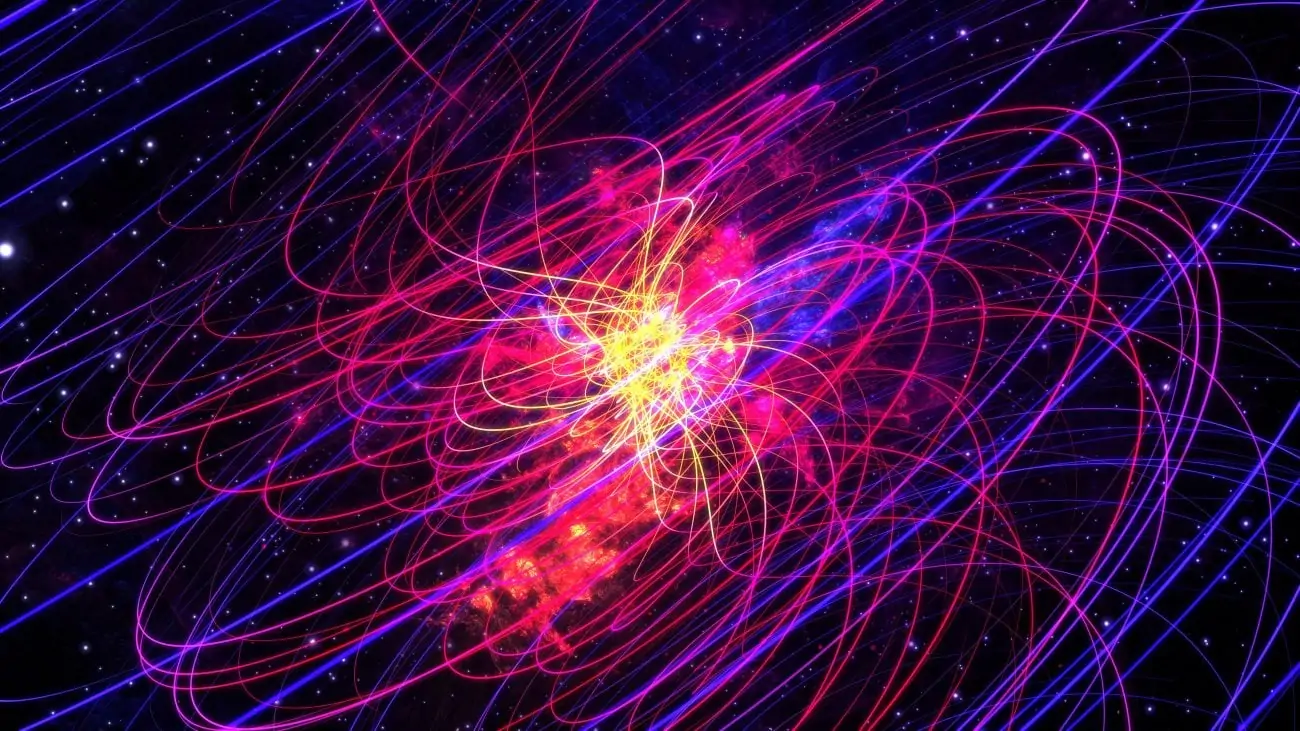

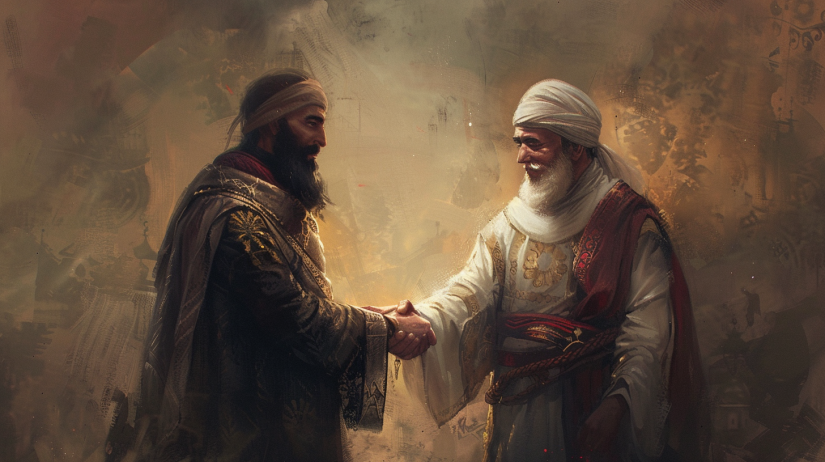


4.5